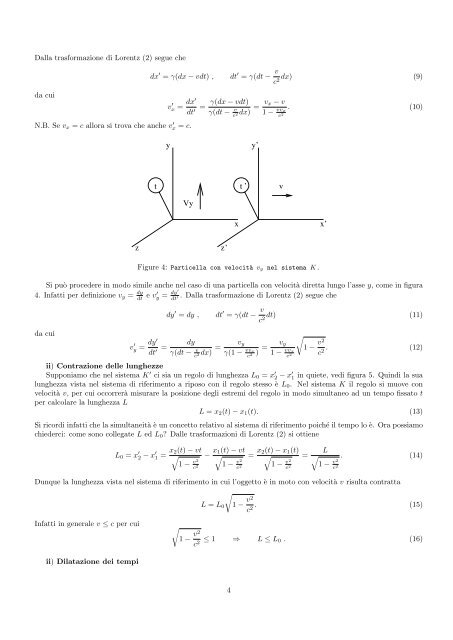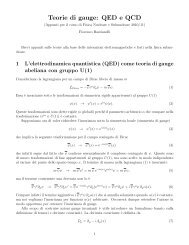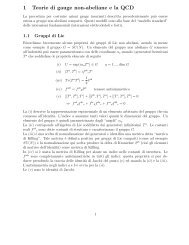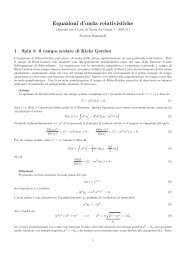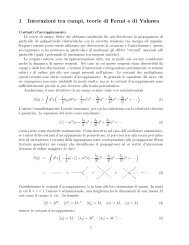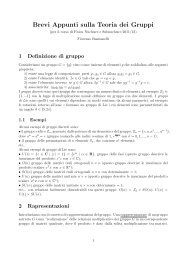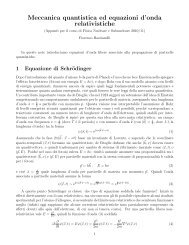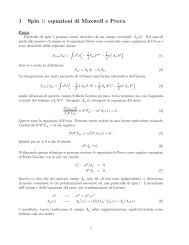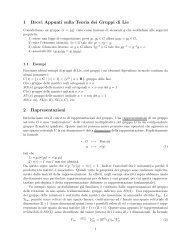Appunti di relatività ristretta
Appunti di relatività ristretta
Appunti di relatività ristretta
You also want an ePaper? Increase the reach of your titles
YUMPU automatically turns print PDFs into web optimized ePapers that Google loves.
Dalla trasformazione <strong>di</strong> Lorentz (2) segue cheda cuidx ′ = γ(dx − vdt) , dt ′ = γ(dt − v dx) (9)c2 v ′ x = dx′dt ′N.B. Se v x = c allora si trova che anche v ′ x = c.=γ(dx − vdt)γ(dt − v c 2 dx) = v x − v1 − vvxc 2 . (10)yy’t t ’vVyxx’zz’Figure 4: Particella con velocità v y nel sistema K.Si può procedere in modo simile anche nel caso <strong>di</strong> una particella con velocità <strong>di</strong>retta lungo l’asse y, come in figura4. Infatti per definizione v y = dydt e v′ y = dy′dt. Dalla trasformazione <strong>di</strong> Lorentz (2) segue che′da cuiv ′ y = dy′dt ′ =dy ′ = dy , dt ′ = γ(dt − v dt) (11)c2 dyγ(dt − v c 2 dx) =v yγ(1 − vvxc) = v y1 − vvx2 c 2√1 − v2c 2 . (12)ii) Contrazione delle lunghezzeSupponiamo che nel sistema K ′ ci sia un regolo <strong>di</strong> lunghezza L 0 = x ′ 2 − x ′ 1 in quiete, ve<strong>di</strong> figura 5. Quin<strong>di</strong> la sualunghezza vista nel sistema <strong>di</strong> riferimento a riposo con il regolo stesso è L 0 . Nel sistema K il regolo si muove convelocità v, per cui occorrerà misurare la posizione degli estremi del regolo in modo simultaneo ad un tempo fissato tper calcolare la lunghezza LL = x 2 (t) − x 1 (t). (13)Si ricor<strong>di</strong> infatti che la simultaneità è un concetto relativo al sistema <strong>di</strong> riferimento poiché il tempo lo è. Ora possiamochiederci: come sono collegate L ed L 0 ? Dalle trasformazioni <strong>di</strong> Lorentz (2) si ottieneL 0 = x ′ 2 − x ′ 1 = x 2(t) − vt√1 − v2c 2− x 1(t) − vt√1 − v2c 2= x 2(t) − x 1 (t)√ =1 − v2c 2L√ . (14)1 − v2c 2Dunque la lunghezza vista nel sistema <strong>di</strong> riferimento in cui l’oggetto è in moto con velocità v risulta contratta√L = L 0 1 − v2c 2 . (15)Infatti in generale v ≤ c per cui√1 − v2c 2 ≤ 1 ⇒ L ≤ L 0 . (16)ii) Dilatazione dei tempi4


